Papers by Loic Deleyrolle

Cancer Research
Tumor Treating Fields (TTFields) are low intensity, alternating intermediate frequency (200kHz) e... more Tumor Treating Fields (TTFields) are low intensity, alternating intermediate frequency (200kHz) electrical fields that extend survival of glioblastoma patients receiving maintenance temozolomide (TMZ) chemotherapy. How TTFields exert efficacy on cancer cells over normal cells, or interact with TMZ is unclear. Primary cilia are microtubule-based organelles triggered by extracellular ligands, mechanical and electrical field stimulation, and are capable of promoting cancer growth and TMZ chemoresistance. We found in both low and high grade patient glioma cell lines that TTFields ablated cilia within 24 hours. Halting TTFields treatment led to recovered frequencies of elongated cilia. Cilia on normal primary astrocytes, neurons and multiciliated ependymal cells were less affected by TTFields. The TTFields-mediated loss of glioma cilia was partially rescued by chloroquine pretreatment, suggesting the effect is in part due to autophagy activation. We also observed death of ciliated cells ...

Tumor Treating Fields (TTFields) are low intensity, alternating intermediate frequency (200kHz) e... more Tumor Treating Fields (TTFields) are low intensity, alternating intermediate frequency (200kHz) electrical fields that extend survival of glioblastoma patients receiving maintenance temozolomide (TMZ) chemotherapy. How TTFields exert efficacy on cancer over normal cells, or interact with TMZ is unclear. Primary cilia are microtubule-based organelles triggered by extracellular ligands, mechanical and electrical field stimulation, and are capable of promoting cancer growth and TMZ chemoresistance. We found in both low and high grade patient glioma cell lines that TTFields ablated cilia within 24 hours. Halting TTFields treatment led to recovered frequencies of elongated cilia. Cilia on normal primary astrocytes, neurons, and multiciliated/ependymal cells were less affected by TTFields. The TTFields-mediated loss of glioma cilia was partially rescued by chloroquine pretreatment, suggesting the effect is in part due to autophagy activation. We also observed death of ciliated cells durin...

Frontiers in Oncology
Glioblastoma (GBM) is an extremely aggressive and incurable primary brain tumor with a 10-year su... more Glioblastoma (GBM) is an extremely aggressive and incurable primary brain tumor with a 10-year survival of just 0.71%. Cancer stem cells (CSCs) are thought to seed GBM’s inevitable recurrence by evading standard of care treatment, which combines surgical resection, radiotherapy, and chemotherapy, contributing to this grim prognosis. Effective targeting of CSCs could result in insights into GBM treatment resistance and development of novel treatment paradigms. There is a major ongoing effort to characterize CSCs, understand their interactions with the tumor microenvironment, and identify ways to eliminate them. This review discusses the diversity of CSC lineages present in GBM and how this glioma stem cell (GSC) mosaicism drives global intratumoral heterogeneity constituted by complex and spatially distinct local microenvironments. We review how a tumor’s diverse CSC populations orchestrate and interact with the environment, especially the immune landscape. We also discuss how to map...

Glioblastoma (GBM) exhibits populations of cells that drive tumorigenesis, treatment resistance, ... more Glioblastoma (GBM) exhibits populations of cells that drive tumorigenesis, treatment resistance, and disease progression. Cells with such properties have been described to express specific surface and intracellular markers or exhibit specific functional features including being slow-cycling or quiescent with the ability to generate proliferative progenies. In GBM, each of these cellular fractions was shown to harbor cardinal features of cancer stem cells 1-7. In this study we focus on the comparison of these cells and present evidence of great phenotypic and functional heterogeneity in brain cancer cell populations with stemness properties, especially between slow-cycling cells and cells phenotypically defined based on the expression of markers commonly used to enrich for cancer stem cells (CSCs). Our data support the cancer stem cell mosaicism model with slow-cycling cells representing critical tesserae.

Brain, 2011
Individual tumour cells display diverse functional behaviours in terms of proliferation rate, cel... more Individual tumour cells display diverse functional behaviours in terms of proliferation rate, cell-cell interactions, metastatic potential and sensitivity to therapy. Moreover, sequencing studies have demonstrated surprising levels of genetic diversity between individual patient tumours of the same type. Tumour heterogeneity presents a significant therapeutic challenge as diverse cell types within a tumour can respond differently to therapies, and inter-patient heterogeneity may prevent the development of general treatments for cancer. One strategy that may help overcome tumour heterogeneity is the identification of tumour sub-populations that drive specific disease pathologies for the development of therapies targeting these clinically relevant sub-populations. Here, we have identified a dye-retaining brain tumour population that displays all the hallmarks of a tumour-initiating sub-population. Using a limiting dilution transplantation assay in immunocompromised mice, label-retaining brain tumour cells display elevated tumour-initiation properties relative to the bulk population. Importantly, tumours generated from these label-retaining cells exhibit all the pathological features of the primary disease. Together, these findings confirm dye-retaining brain tumour cells exhibit tumour-initiation ability and are therefore viable targets for the development of therapeutics targeting this sub-population.
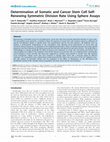
Representing a renewable source for cell replacement, neural stem cells have received substantial... more Representing a renewable source for cell replacement, neural stem cells have received substantial attention in recent years. The neurosphere assay represents a method to detect the presence of neural stem cells, however owing to a deficiency of specific and definitive markers to identify them, their quantification and the rate they expand is still indefinite. Here we propose a mathematical interpretation of the neurosphere assay allowing actual measurement of neural stem cell symmetric division frequency. The algorithm of the modeling demonstrates a direct correlation between the overall cell fold expansion over time measured in the sphere assay and the rate stem cells expand via symmetric division. The model offers a methodology to evaluate specifically the effect of diseases and treatments on neural stem cell activity and function. Not only providing new insights in the evaluation of the kinetic features of neural stem cells, our modeling further contemplates cancer biology as can...

Neuro-oncology, 2020
Glioblastoma (GBM) contains cell populations with distinct metabolic requirements, with fast-cycl... more Glioblastoma (GBM) contains cell populations with distinct metabolic requirements, with fast-cycling cells harnessing aerobic glycolysis, and treatment-resistant slow-cycling cells (SCCs) preferentially engaging lipid metabolism. How the different tumor cells interact with immune cells and how this metabolic heterogeneity shapes the immune landscape in GBM has yet to be understood. The objectives are to unravel the various molecular signals and metabolic link that underlie the interaction of SCCs with the GBM microenvironment, in particular with the suppressive immune compartment, and to effectively target these interactions for better therapeutics. Multiple murine glioma cell lines were used to establish metabolic heterogeneity and communications, while various genetic and pharmacological approaches were applied to assess the effect of disrupting the metabolic interplay between SCCs and the immune system. We determined that SCCs exhibit distinct metabolic dependencies, involving pr...

Neuro-Oncology
INTRODUCTION Mounting evidence suggests infiltrating immune-suppressive cells contribute to immun... more INTRODUCTION Mounting evidence suggests infiltrating immune-suppressive cells contribute to immune checkpoint inhibitor resistance and poor survival in Glioblastoma (GBM) patients. We have previously shown glioma-associated monocytic-myeloid derived suppressor cells (M-MDSCs) express chemokine receptors CCR2 and CX3CR1. Genetic and pharmacologic targeting of CCR2 promoted sequestration of M-MDSCs in the bone marrow and, in combination with PD-1 blockade, slowed progression of KR158 and 005GSC murine gliomas. This combination treatment also enhanced infiltration of IFNg-producing T cells that were less exhausted. Although CCR2+/CX3CR1+ cells display surface markers indicative of bone marrow-derived M-MDSCs, additional studies are needed to formally establish the source of these cells and to determine if they exhibit an immune-suppressive phenotype as well as migrate to the CCR2 ligands, CCL2 and/or CCL7. OBJECTIVE Evaluate the source, migration, and immune suppressive function of CCR...

Neuro-Oncology
INTRODUCTION Glioblastoma are a challenge for neuro-oncologists and current therapies are minimal... more INTRODUCTION Glioblastoma are a challenge for neuro-oncologists and current therapies are minimally effective. Standard-of- care treatment is almost inevitably followed by disease recurrence. Adoptive T cell transfer has emerged as a viable therapeutic for brain malignancies. While promising, the efficacy of this approach is often limited by a complex immunosuppressive tumor microenvironment. These complexities mean that more sophisticated T cell products are required. OBJECTIVES The brain tumor microenvironment provides local restraints via metabolic competition suppressing antitumor immunity, specifically inhibiting infiltration and tumoricidal functions of host and adoptively transferred tumor-reactive T cells. The overall goal of this project is to test new treatments to reverse immune dysfunction in cancer through the regulation of T cell metabolic signaling. We propose that modulating glucose pathway in T cells can potentiate their anti-tumor activity once adoptively transferr...
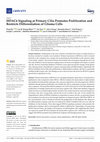
Cancers
Histone deacetylase 6 (HDAC6) is an emerging therapeutic target that is overexpressed in glioblas... more Histone deacetylase 6 (HDAC6) is an emerging therapeutic target that is overexpressed in glioblastoma when compared to other HDACs. HDAC6 catalyzes the deacetylation of alpha-tubulin and mediates the disassembly of primary cilia, a process required for cell cycle progression. HDAC6 inhibition disrupts glioma proliferation, but whether this effect is dependent on tumor cell primary cilia is unknown. We found that HDAC6 inhibitors ACY-1215 (1215) and ACY-738 (738) inhibited the proliferation of multiple patient-derived and mouse glioma cells. While both inhibitors triggered rapid increases in acetylated alpha-tubulin (aaTub) in the cytosol and led to increased frequencies of primary cilia, they unexpectedly reduced the levels of aaTub in the cilia. To test whether the antiproliferative effects of HDAC6 inhibitors are dependent on tumor cell cilia, we generated patient-derived glioma lines devoid of cilia through depletion of ciliogenesis genes ARL13B or KIF3A. At low concentrations, 1...

Cellular and Molecular Life Sciences
The metabolic complexity and flexibility commonly observed in brain tumors, especially glioblasto... more The metabolic complexity and flexibility commonly observed in brain tumors, especially glioblastoma, is fundamental for their development and progression. The ability of tumor cells to modify their genetic landscape and adapt metabolically, subverts therapeutic efficacy, and inevitably instigates therapeutic resistance. To overcome these challenges and develop effective therapeutic strategies targeting essential metabolic processes, it is necessary to identify the mechanisms underlying heterogeneity and define metabolic preferences and liabilities of malignant cells. In this review, we will discuss metabolic diversity in brain cancer and highlight the role of cancer stem cells in regulating metabolic heterogeneity. We will also highlight potential therapeutic modalities targeting metabolic vulnerabilities and examine how intercellular metabolic signaling can shape the tumor microenvironment.

Neuro-Oncology, Nov 1, 2017
Bioenergetics has recently been garnering attention as a promising avenue for the development of ... more Bioenergetics has recently been garnering attention as a promising avenue for the development of anti-cancer therapies. Many cancers, including brain tumors, have long been thought to undergo widespread metabolic reprograming, with most tumor cells relying exclusively on glucose fermentation for rapid energy production. Recently, metabolic heterogeneity has been described in animal models of glioblastoma (GBM), suggesting that these tumors do not exclusively rely on aerobic glycolysis. However, the precise nature of the cellular compartments harboring those various metabolic specificities has not been established yet. OBJECTIVES: We previously reported cellular diversity in GBM based on cell cycle kinetics and described the presence of fast-cycling cells (FCCs) and slow-cycling cells (SCCs). SCCs exhibit enhanced tumorigenicity and treatment resistance, thus representing attractive therapeutic targets. Actively proliferative cells depend on aerobic glycolysis but SCCs appear to mostly rely on oxidative phosphorylation. Our objective is to characterize the GBM metabolic landscape and explore tumor metabolism as a targetable vulnerability specific to FCCs and treatment-resistant SCCs. METHODS: GBM patient-derived FCCs and SCCs, which were isolated by flow cytometry based on their dyeretention properties, were compared with respect to their metabolic properties and adaptabilities. RESULTS: Our study reveals the existence of a metabolic dichotomy between subsets of GBM cells. We found that SCCs are refractory to conventional treatment, drive tumor relapse, and do not rely on glucose fermentation, but rather exhibit functional mitochondrial oxidative activity that can be therapeutically targeted in vitro and in vivo. SCCs up-regulate lipid transport, storage, and metabolism, supporting their ability to survive and adapt to metabolic stresses such as glucose restriction. CONCLUSION: Our studies characterize specific cellular subtypes/states with distinct metabolic characteristics, supporting the concept of metabolic heterogeneity and adaptability in GBM. Our findings also identify lipid pathway components whose pharmacological inhibition can deplete cell subpopulations associated with tumor recurrence.
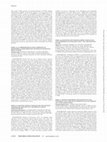
Neuro-Oncology
BACKGROUND Glioblastoma (GBM) is a recalcitrant brain cancer in the clinic. The therapeutic effec... more BACKGROUND Glioblastoma (GBM) is a recalcitrant brain cancer in the clinic. The therapeutic effect of using standard care (SC), such as surgery, radiation and/or temozolomide (TMZ) is dismal. CAR T-cell therapy has been increasingly recognized in the field as an innovative therapeutic approach for this malignancy. We identified CD70 as a glioma marker, and show that CD70CAR T cells recognize CD70+ GBMs and mediated regression of established tumors. Since recurrent GBMs that had been heavily treated by the SC treatments expressed a relatively higher level of CD70 than primary tumors, we thus hypothesize that these modalities may help to enhance the expression of CD70 and therapeutic effect of the CD70CAR T cell therapy in GBM. OBJECTIVE To determine if radiation or TMZ treatments could influence the CD70 expression of GBM, and the CD70CAR T-cell recognition. METHODS CD70 expression on GBM cell lines, including primary GBMs (CD70+ or CD70-) and U87 (CD70+), were assessed after treatin...

Neuro-Oncology
BACKGROUND Glioblastoma (GBM) is a refractory brain tumor that desperately needs new therapeutic ... more BACKGROUND Glioblastoma (GBM) is a refractory brain tumor that desperately needs new therapeutic interventions. Our group identified CD70 as a novel target of CAR-T therapy for this malignancy. We demonstrate that CD70 is overexpressed by low-/high-grade gliomas and associated with poor survival for patients; CD70 promotes CD8 specific cell death and tumor-associated macrophage infiltration in gliomas. The CD70 CAR (using CD27, a natural costimulatory receptor of T cells as an antigen-binding region) T cells can efficiently eradicate CD70 positive tumors in syngeneic and xenograft mouse models. OBJECTIVE To evaluate the properties of CD70 CAR-transduced T cells in GBM treatment. METHODS CD70 CAR or IL13Rα2 CAR was linked with fluorescent reporter gene EGFP, and cloned into a retroviral vector (pMSGV8). In vitro T cell culture and flow cytometry were used to evaluate the self-enrichment property and susceptibility to TCR stimulation of the CAR T cells. KI67, Bcl-2, CD70 gene expressi...
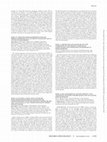
Neuro-Oncology
BACKGROUND The blood-brain barrier (BBB) remains a potent obstacle for development of new therapi... more BACKGROUND The blood-brain barrier (BBB) remains a potent obstacle for development of new therapies against glioblastoma (GBM). While activated T cells can cross the BBB, immunotherapy has yet to be fully unlocked for malignant brain tumors due their heterogeneity and immunosuppressive microenvironments. To overcome these challenges, our group has developed a novel treatment platform, which leverages the use of a clinically translatable nanoparticles (NPs) combined with personalized tumor derived mRNA to peripherally activate T cells against a heterogenous source of tumor antigens and reprogram the intratumoral milieu into an immune activated state. OBJECTIVE We sought to assess if RNA-NPs could activate systemic/intratumoral dendritic cells (DCs) and mediate a peripheral T cell response that could penetrate the GBM microenvironment. RESULTS We uncovered that RNA-NPs elicit potent innate immunomodulating effects through release of interferon-α (IFN-α) from plasmacytoid DCs (pDCs). A...
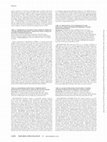
Neuro-Oncology
BACKGROUND We found that CD70, as an immune modulator, in GBM plays a critical role in immunosupp... more BACKGROUND We found that CD70, as an immune modulator, in GBM plays a critical role in immunosuppression and tumor progression. Although CD70+ tumors recruit more CD3+ T cells than CD70— tumors do in patients with GBM, CD70 on GBM is also found to be involved in promoting CD8+ T cell death. The experiments by overexpressing or silencing CD70 in a primary tumor demonstrate that it can alter cell growth, survival, migration, and morphology of GBM cells. CD70 is negatively correlated with survival in patients with gliomas. These results suggest that CD70 is involved in immunosuppression in GBM. OBJECTIVE To determine if abrogating CD70 in tumor using CD70CAR-T cells could reverse the immunosuppressive microenvironment and enhance overall endogenous tumor immunity against both CD70+ and CD70— tumors, which might help to overcome a key obstacle— tumor-heterogeneity using single-targeted CAR-T cell therapy. METHODS CD70 was overexpressed (~75% positivity) in KR158 GBM line. Murine CD70CAR...

Nano letters, Oct 10, 2018
Translation of nanoparticles (NPs) into human clinical trials for patients with refractory cancer... more Translation of nanoparticles (NPs) into human clinical trials for patients with refractory cancers has lagged due to unknown biologic reactivities of novel NP designs. To overcome these limitations, simple well-characterized mRNA lipid-NPs have been developed as cancer immunotherapeutic vaccines. While the preponderance of RNA lipid-NPs encoding for tumor-associated antigens or neoepitopes have been designed to target lymphoid organs, they remain encumbered by the profound intratumoral and systemic immunosuppression that may stymie an activated T cell response. Herein, we show that systemic localization of untargeted tumor RNA (derived from whole transcriptome) encapsulated in lipid-NPs, with excess positive charge, primes the peripheral and intratumoral milieu for response to immunotherapy. In immunologically resistant tumor models, these RNA-NPs activate the preponderance of systemic and intratumoral myeloid cells (characterized by coexpression of PD-L1 and CD86). Addition of immu...
Uploads
Papers by Loic Deleyrolle